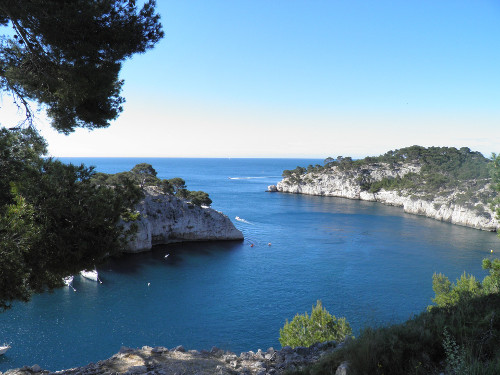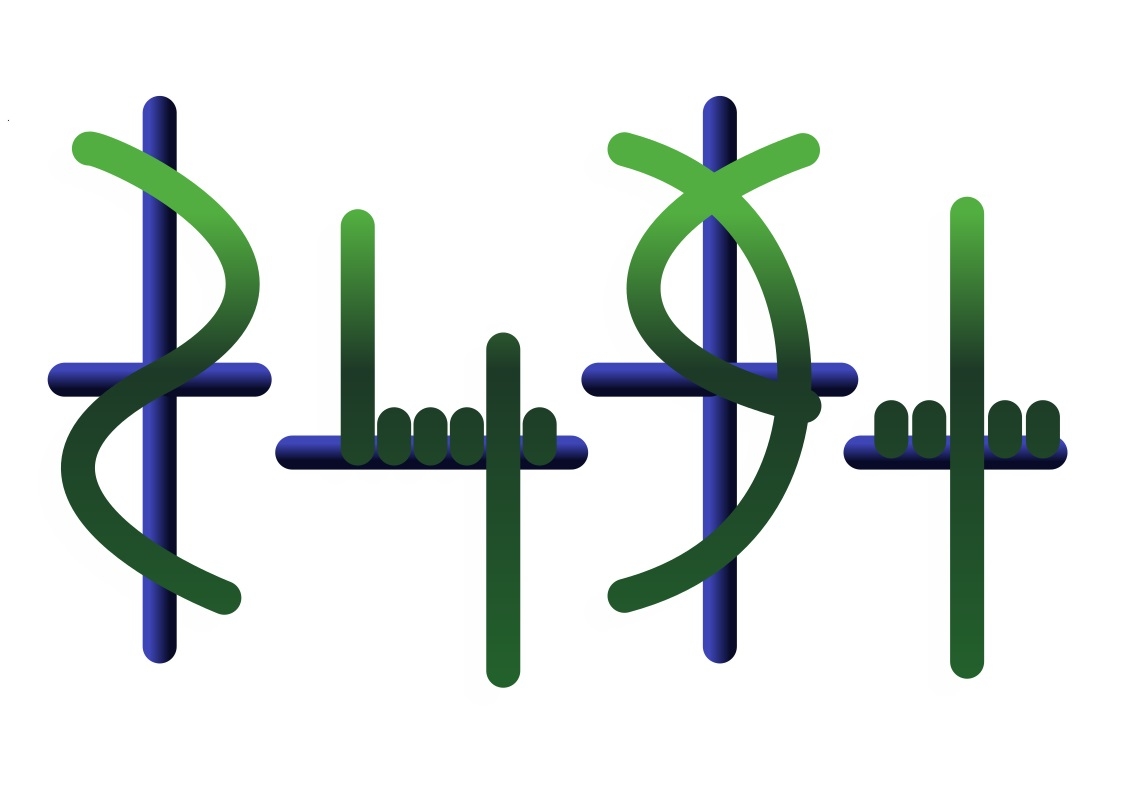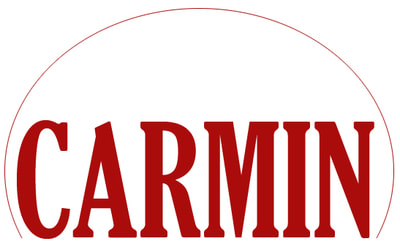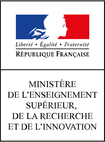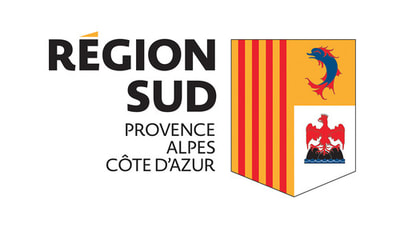Practical information
This workhsop will take place at the CIRM from the 30th of January to the 3rd of February 2023. More informations soon!Presentation of the workshop
This workshop aims at bringing together mostly young researchers to spend one week studying a topic in low dimensional topology. Part of the week is dedicated to detailed talks taking time to introduce the background of the theory necessary to tackle more recent questions. Time is voluntarily made available to encourage discussion that the presentations will generate.
The first edition took place at the CIRM in February 2021; the topic was relations between homological and quantum invariants in low-dimensional topology. The second edition took place in April 2022 in the Centre CNRS Paul Langevin in Aussois; the topic was relations between knots/knotted objects and 4-manifolds.
The aim of this third edition is to understand the construction of Morse homology, Floer homology and Fukaya categories. We endebted to Guillem Cazassus for his contribution to the program.
Program
A pdf version of the program with abstract and speaker can be found here.Morse functions (Clément Legrand)
The aim of this talk is to present the basics of Morse theory: definition of Morse functions, existence and genericity, Morse lemma and index of a critical point, pseudo-gradients, stable and unstable manifolds, Morse charts, topology of the sub-level sets and handle gluing associated to a critical point, Smale condition. Examples and pictures are expected (proofs are not).
Explain in a picture that for a perfect Morse function, the unstable manifolds give a cell decomposition of the manifold, and the cell differential counts flowlines.
Morse complex (Rudy Dissler)
This talk aims at explaining the construction of the Morse complex. Define trajectories and broken trajectories, construct the Morse complex and prove that it is a complex, briefly define the complex over \(\mathbb{Z}\). In the proof of \(\partial^2=0\), use the identity \[(\star) \qquad \qquad\partial \overline{\mathcal{M}}(x,y) = \coprod_{z} {\mathcal{M}(x,z)\times \mathcal{M}(z,y)},\] explain it in a picture, but leave its proof to the next speaker.
Morse complex, \(\partial^2=0\) (Quentin Faes)
Outline a proof strategy for \((\star)\) that can be later adapted to the Floer setting (in the Morse setting, a more direct proof can be found in [Audin–Damian]). Highlight the key ingredients:
- — transversality: first form universal moduli space, then apply the Sard-Smale theorem;
- — compactness: line breaking;
- — gluing: construct a pre-gluing map, then make it a gluing map (use the implicit function theorem (IFT) or the fixed point theorem);
- — elliptic regularity: for the Sard-Smale theorem and the IFT, it requires working in Banach spaces, but actual solutions are smooth.
Morse homology (Pierre Godfard)
The main goal of this talk is to prove that the homology of the Morse complex constructedin the previous talk does not depend on the input Morse function nor on the pseudo-gradient. As an application, state and prove the Morse inequalities of [Audin‐Damian, section 4.4].
State without proof that it computes the homology of the manifold.
Fukaya–Morse category of a smooth manifold (Benjamin Haioun)
Define the ``Fukaya–Morse category'' \(\mathcal{F\!M}(X)\), introduced in [Fukaya 93, chapter 1], and denoted \(Ms(X)\) there.
In particular, define the moduli space of metric rooted ribbon trees (associahedron), its compactification, and explain how the structure of its codimension 1 boundary dictates the algebraic structure of \(\mathcal{F\!M}(X)\) (\(A_\infty\)-category). Define the higher composition operations \(\mu^k\), the \(A_\infty\) relations they satisfy, and explain the meaning the first three relations statisfied by the \(\mu^k\).
Pseudo-holomorphic curves and Gromov compactness (Filippo Bianchi)
Present the Arzelà–Ascoli theorem on compactness when \(|\mathrm{d} u|\) is uniformly bounded for a pseudo-holomorphic curve \(u\). When it is not the case, explain what
Floer complex: a naive definition. (Diego Santoro)
Derive a simple naive definition of the Floer complex (in the exact setting) as the Morse homology of the action functional on the space of arcs \(\mathcal{P}(L_0, L_1)\) for given Lagrangians \(L_0,L_1\) (with e.g. a fixed almost complex structure, don't worry about transversality).
Underline the important fact that all strips in \(\mathcal{M}(x, y)\) have the same area (using twice the Stokes formula).
Explain why Floer \(\neq\) Morse (infinite dimension, flow being not globally defined, no cellular decomposition...). Therefore one gets something different than \(H_*(\mathcal{P}cal(L_0, L_1))\).
State the main expected properties: \(\partial^2=0\), the Hamiltonian isotopy invariance, or \(HF(L,L) \simeq H_*(L)\). Apply these properties to prove the Arnold–Givental conjecture, and the Arnold conjecture as a particular case.
Surfaces (Yohan Mandin)
Recall the uniformization theorem, and apply it to get explicit descriptions of moduli spaces of strips in a surface. Describe examples and counter examples of the above expected properties.
Maslov index (Arno Wildi)
Explain the construction of the Maslov index (Lagrangian Grassmanian, canonical short paths, ...), compute it on examples in surfaces (include polygons).
State the Riemann–Roch formula giving the dimension of moduli spaces, check that it gives the right dimension for examples on surfaces.
Cotangent bundles (Laura Marino)
Outline a correspondence between smooth topology on \(X\) and symplectic topology on \(T^*X\). For \(HF(L,L) \simeq H_*(L)\) give idea of heuristic proof (adiabatic limit: intuitive but technically involved), and also another proof using Piunikhi–Salamon–Schwarz morphisms (technically easier). Derive from \(\mathcal{F\!M}(X)\) a definition of \(\mathcal{F}\!u\!k(T^* X)\).
Fredholm theory (Anthony Saint-Criq)
Definition and properties of Fredholm operators, Sobolev spaces and Linearized Cauchy--Riemann operator. Index formula for strips (without proof).
Transversality and failure of transversality (Hao Xu)
Explain strategy of proof of transversality, importance of the somewhere injectivity assumption. Describe examples of branched covers, give moduli spaces of wrong dimensions, no matter how you perturb.
Explain why allowing domain-dependent perturbations solves the above problem. How symmetries restrict the choices of such perturbations.
Deligne–Mumford vs associahedron (Bangxin Wang)
Define the Deligne–Mumford moduli space \(\mathcal{M}_{0,k}\) of discs with \(k\) marked boundary points, give its dimension and its compactification, explain that it identifies with the space of trees.
The Fukaya category (Stavroula Makri)
Define the \(\mu^k\) maps, recall quickly why \(A_\infty\) relations hold (just same as for \(\mathcal{F\!M}(X)\)), do some examples on surfaces (what polygons count, what don't, according to the dimensions). Define \(\mathcal{F}\!u\!k(M)\) (objects, morphisms involving perturbations). Briefly explain how to make it an \(A_\infty\)--category (universal choice of perturbations...).
More general approaches to noncompactness and disc bubbling (Renaud Detcherry)
- — Unbounded area: introduce the Novikov ring.
- — To avoid bubbling: curved \(A_\infty\) structures, bounding cochains.
Schedule
- Monday
- 09:15 — 10:30: LEGRAND
- 11:00 — 12:15: DISSLER
- 16:00 — 17:15: FAES
- 17:45 — 19:00: GODFARD
- Tuesday
- 09:15 — 10:30: HAIOUN
- 11:00 — 12:15: BIANCHI
- 16:00 — 17:15: SANTORO
- 17:45 — 19:00: MANDIN
- Wednesday
- 09:15 — 10:30: WILDI
- 11:00 — 12:15: MARINO
- Thursday
- 09:15 — 10:30: SAINT-CRIQ
- 11:00 — 12:15: XU
- 16:00 — 17:15: SCHELSTRAETE
- 17:45 — 19:00: WANG
- Friday
- 09:15 — 10:30: MAKRI
- 11:00 — 12:15: DETCHERRY
Pre-talks
Before the workshops a few online "pre-talks" are scheduled to warm us up and cover some background and motivational material. Recordings and notes will be made available here:
- 11/01/2023: Symplectic Geometry (Guillem CAzassus)
- Notes.
- Download the video.
- If you want access to the recording of the Q & A session which took place after the talk, please contact the organizers.
Participants
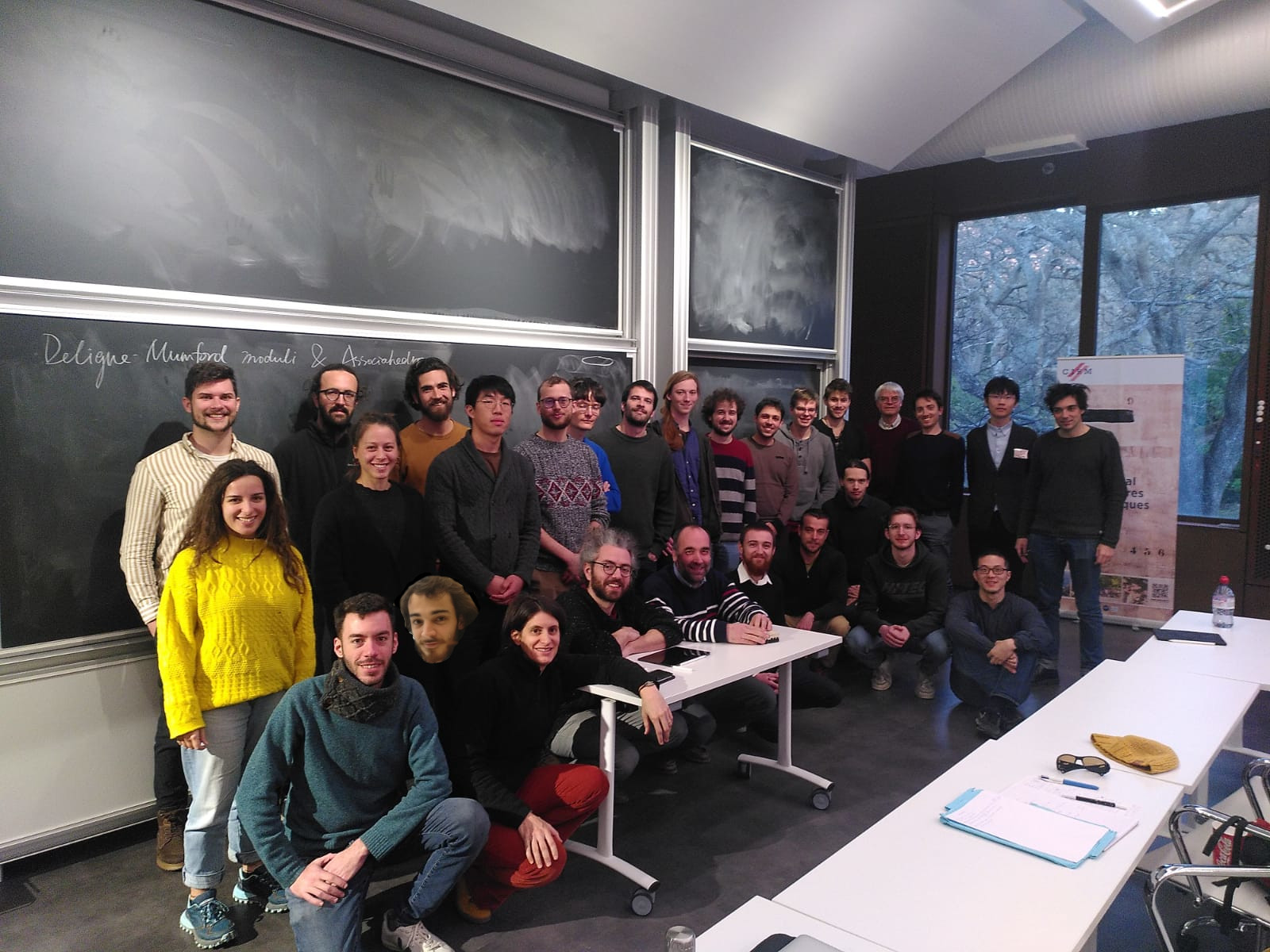
- Filippo Bianchi (Pisa)
- Léo Bénard (Göttingen)
- Marco De Renzi (Zürich)
- Renaud Detcherry (Dijon)
- Rudy Dissler (Marseille)
- Quentin Faes (Tokyo)
- Paolo Farina (Toulouse)
- Pierre Godfard (Paris)
- Emmanuel Graff (Caen)
- Benjamin Haioun (Toulouse)
- Edwin Kitaeff (Dijon)
- Andres Klene-Sanchez (Oxford)
- Clément Legrand (Clermont-Ferrand)
- Stavroula Makri (Bonn)
- Yohan Mandin (Grenoble)
- Manos Manouras (Pau)
- Laura Marino (Paris)
- Jules Martel (Zürich)
- Gregor Masbaum (Paris)
- Delphine Moussard (Marseille)
- Louis-Hadrien Robert (Clermont-Ferrand)
- Anthony Saint-Criq (Toulouse)
- Diego Santoro (Pisa)
- Léo Schelstraete (Louvain)
- Bangxin Wang (Zürich)
- Arno Wildi (Zurich)
- Hao Xu (Göttingen)
- Han Zhicheng (Göttingen)
Organizers
- Léo Bénard (Universität Göttingen)
- Marco De Renzi (Universität Zürich)
- Jules Martel (Universität Zürich)
- Delphine Moussard (Aix-Marseille Université)
- Louis-Hadrien Robert (Université Clermont Auvergne)
